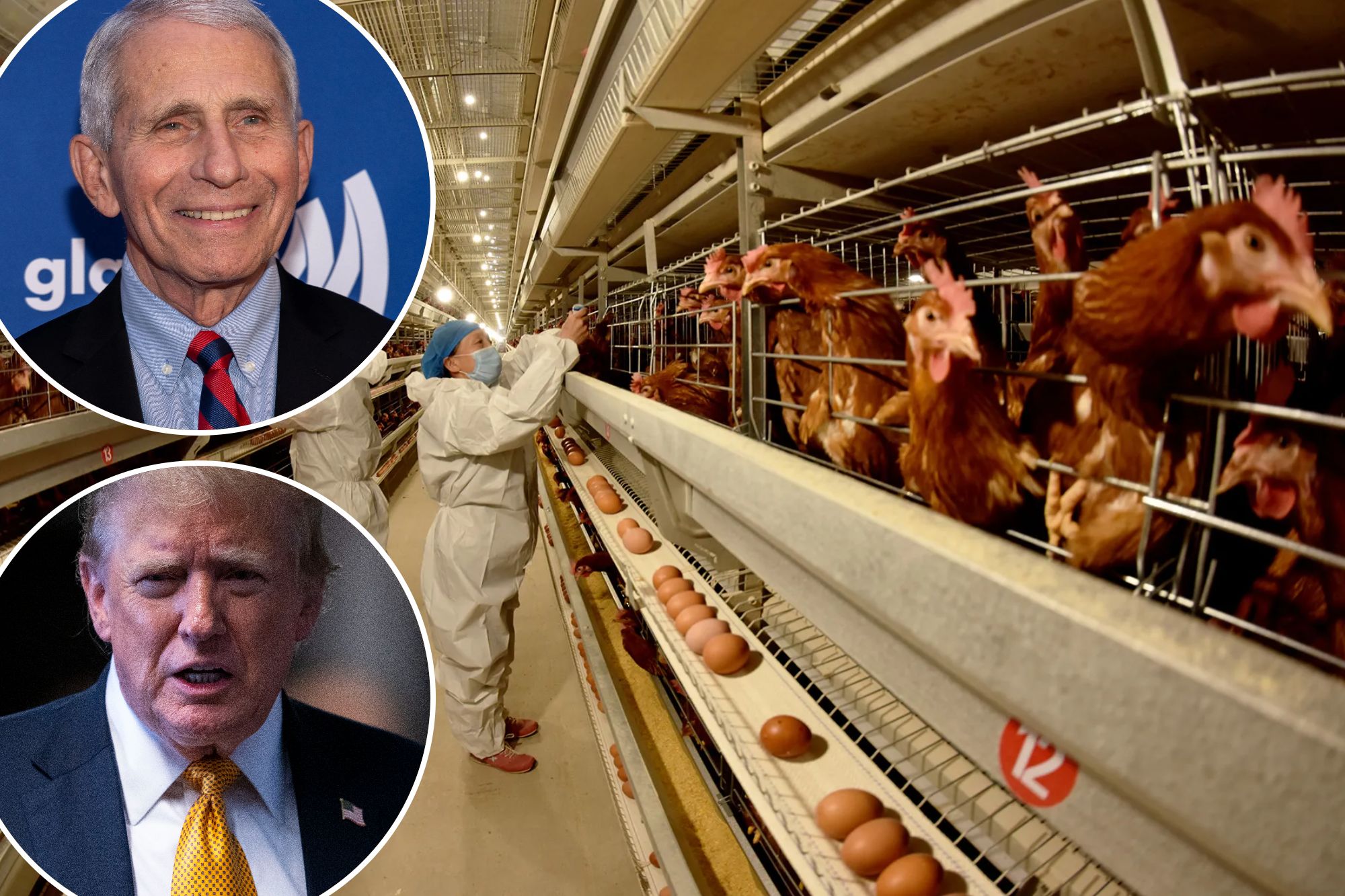
A new strain of bird flu is spreading rapidly. It began in Asia in 2020, arrived in Canada in 2021 and reached the US a year later, killing tens of millions of birds and tens of thousands of sea mammals. So far, bird flu — whose human mortality rate is being touted as 50% — has only been transmitted from animals to people.
But with bird flu DNA detectable in 20% of all milk sold in the United States, if a mutation occurs, human-to-human transmission could be possible.
Bird flu is hardly the only threat to world health right now. Monkeypox is back, raging across the Democratic Republic of Congo featuring a strain far deadlier than the one that broke out in 2022.
While health authorities may be alarmed about these viruses, Americans ought to be alarmed about our health authorities. Because if public health officials treat these outbreaks like they did the last, the response to any new pandemic could be worse than the virus itself.
The problem begins with our authorities’ penchant for distorting risk. During the 2009 swine flu pandemic, for instance, health officials predicted as many as 120 million people would die.
Governments stockpiled vaccines. But just as soon as the pandemic began, it ended. Vaccines expired. The death count was that of mild seasonal influenza.
By the time Covid struck a decade later, things had only gotten worse. Media bombarded America with images of devastation. The doomsy distortions had their desired effect: By March 2020, the University of Southern California Understanding Coronavirus in America tracking survey showed that average Americans believed the risk of death from COVID-19 was 25% – on par with the Ebola virus.
Never mind that just a month earlier, NIAID Director Anthony Fauci and CDC Director Robert Redfield wrote that COVID’s real mortality figure was less than 1%.
Yet when then-President Donald Trump tried correcting the record — “a fraction of 1%,” he declared in a March 2020 interview — he was accused of “spreading misinformation.”
Months later, Americans still believed Covid’s death rate was 20%; Fauci’s response: the nation needs “to be more afraid.” The lockdowns and school closures soon followed, sold as something every country must do. But not everyone agreed: In March 2020, nearly 1,000 experts — including future CDC Director Rochelle Walensky — warned in an open letter to Mike Pence about the uncertain benefits of lockdowns.
Things only worsened when vaccines arrived the following year, touted by CDC Director Walensky to completely block virus transmission and “end the pandemic” — despite clear evidence to the contrary. Adverse events from the vaccine were ignored; masks that science knew were useless became obligatory.
The consequences were harrowing.
Lockdowns likely caused millions of deaths and created massive economic disruption. School closures set back child development. Vaccine mandates and misinformation increased vaccine hesitancy and destroyed trust in public health.
The brief monkeypox pandemic of 2022 fit a similar pattern. Gay and bisexual men accounted for 96% of all cases, yet health officials maintained “anyone can get monkeypox” in order to reduce potential stigma. In the end, the CDC prioritized feelings over disease prevention — and the cases piled upwards.
During COVID-19 and monkeypox, policy was created first–and then the data was distorted to justify it. Prominent scientists who questioned this approach were condemned and punished, while tech giants censored dissenting opinions, according to a recent House of Representatives report.
We already see the media following the same script with bird flu. Fewer than 1% of infected cattle die from the disease; and the real risk of death in humans is almost certainly far lower than that grim 50% figure, according to scientific experts.
The CDC, too, continues its bizarre behavior. Earlier this month, they recommended N95s masks and goggles for dairy workers. Yet N95s are ineffective for seasonal influenza, which is identical in viral structure to bird flu. Professor Michael Osterholm of the Center for Infectious Disease Research and Policy at the University of Minnesota, points out that goggles readily fog, increasing risk of worker injury.
As for vaccines, the Department of Health and Human services recently assured journalists that stockpiles of vaccines for bird flu are ready to deploy. However, the scant clinical testing that has been conducted was on an outdated 2020 version of the vaccine.
Making the establishment scientific again starts with accountability. Some progress has been made: top NIH officials have faced bipartisan criticism and disciplinary action over COVID-19’s origins.
But otherwise, pandemic response leaders continue receiving plaudits, pensions, and prestigious new jobs. The Biden DOJ also continues to block criminal investigations into COVID mismanagement.
But change cannot come fast enough to combat bird flu, both the disease and the accompanying misinformation.
Earlier this month, the CDC detected elevated levels of influenza A, of which bird flu is a subtype, in US wastewater.
What was not reported was that these levels were, on average, still lower than normal.
Misrepresented data just to get a story — sound familiar?
Meanwhile, just last week a second case of dairy-linked bird flu was reported in Michigan. Also reported: rapid progress to develop an mRNA bird flu vaccine.
In anticipation of the potential financial windfall, the stock price of mRNA vaccine pioneer Moderna has exploded by 50% in May alone. Once again — sound familiar?
Kevin Bass is a scientist and author. X: @kevinnbass














